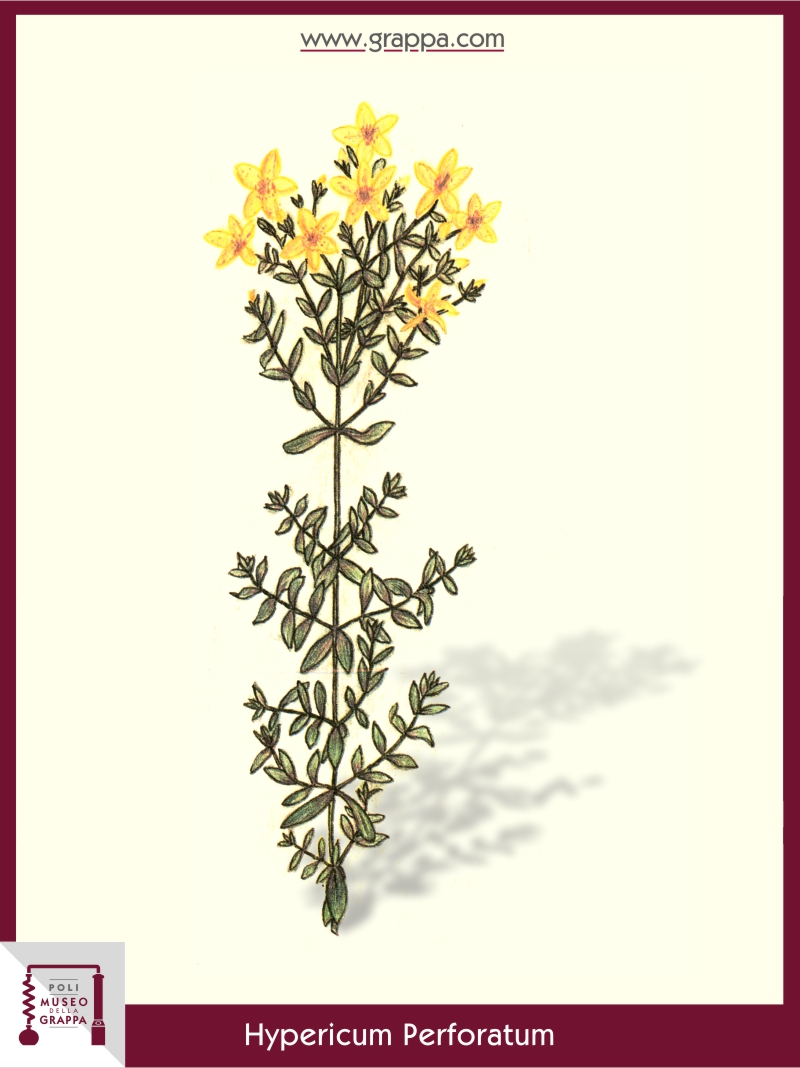Hellish Grappa
- Plant: Pperforate St John's-wort (Hypericum Perforatum)
- Plant part: flower
- Plant feauters: anesthetic

-
Description:
Among the countless magical remedies collected by the doctors of the Middle Ages there was also St. John's wort, commonly used as an amulet to ward off or keep away evil spirits.
For this purpose, the plant was placed in front of the house, worn as an amulet or placed over the head of the bed to ensure a peaceful sleep.For all these attributed qualities, St. John's wort merited the name "Fugademonum" (exorcist of devil) and for this purpose was also used therapeutically: not too much, just to drive out devils "in the body" but to limit in some way the so-called hypochondriacs who appeared to be possessed by demons.
The plant was recently considered an effective remedy against endogenous and psychogenic depressions as well, especially due to the stimulating action, almost exciting, of its active substance (hypericin) which is present both in flowers and in leaves.
Exactly this substance, hypericin, with its blood-red pigments, visible even tot he naked eye in the red dots of the flowers and sometimes also in the leaves, has given rise to all these fantasies.
A pigment that gives off an odor similar to incense which led to the conviction that it was possible to drive out devils.
A pigment capable, because of its anti-inflammatory action, really to "drive out" the "devils" derived from burns, even the most serious:
just think of the now famous St. John's wort oil against suburn.Hypericin is also the substance that imparts a red-brick color to the Grappa, but it is important to use the best species, therefore Hypericum perforatum, also recognizable to the naked eye for those "apparent holes" that can be seen by observing the backlit leaves.
-
Note:
Phenomena of photosensitivity for light-skinned individuals are possible.
The recipe
-
Ingredients:
- 1 liter of Grappa
- 3 flowering twigs of St. John's wort
- 1 lemon, cut into slices -
Preparation:
Three flowering twigs of St. John's wort together with a lemon cut in slices in a liter of Grappa (left to macerate for a couple of months before filtration) will impart to the Grappa all that typical aroma which characterizes the plant.
After six months of aging the Grappa then improves its taste to the point of being truly worthy of the plant from which it comes.
A pleasant digestive be taken after meals.
Poli Distillerie and
Poli Grappa Museum
Newsletter
Subscribe our newsletter to keep up to date with our latest news.